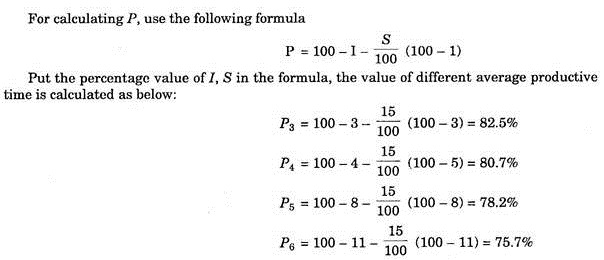While an operator handles multi-machine to get the output, for an engineer it is quite important to know the economical number of machines to be allotted per operator.
How the number of machines per operator can be found out without considering the factor of machine interference.
The cost of operating number of machines by an operator can be calculated by the formula:
nM + L/nP
ADVERTISEMENTS:
where n = number of machines allotted to an operator
M = hourly machine rate, i.e. power, depreciation etc.
L = hourly rate of operator’s labour
P = average productive time per machine (or the efficiency in percentage of overall operating time).
ADVERTISEMENTS:
For finding the value of P, following factors should also be known.
S = Service time per machine in percentage of overall operating time, assuming that each machine is allotted to an operator.
D = Down time per machine in percentage of total operating time.
I = Average interference time per machine in percent of overall time.
ADVERTISEMENTS:
To understand the application of the formula, assume, total average service time per machine in percentage, when one machine is allotted to one operator is 15%. In case when 3, 4, 5, 6 machines are actually allotted to one operator and the labour cost is Re. 1 per hour, and the machine rate is Re.1/-hour/machine.
It is found out from the machine interference tables that for service time of 15%, for machine numbering 3,4,5,6, the Interference time is equal to 3, 5, 8 and 11 percent. Now applying the data as below.
By analysing the table given above, it is seen that an assignment of five machines is the most economical one.

